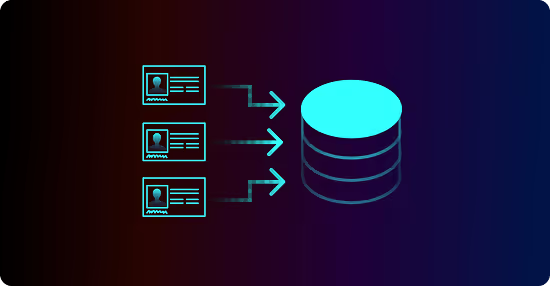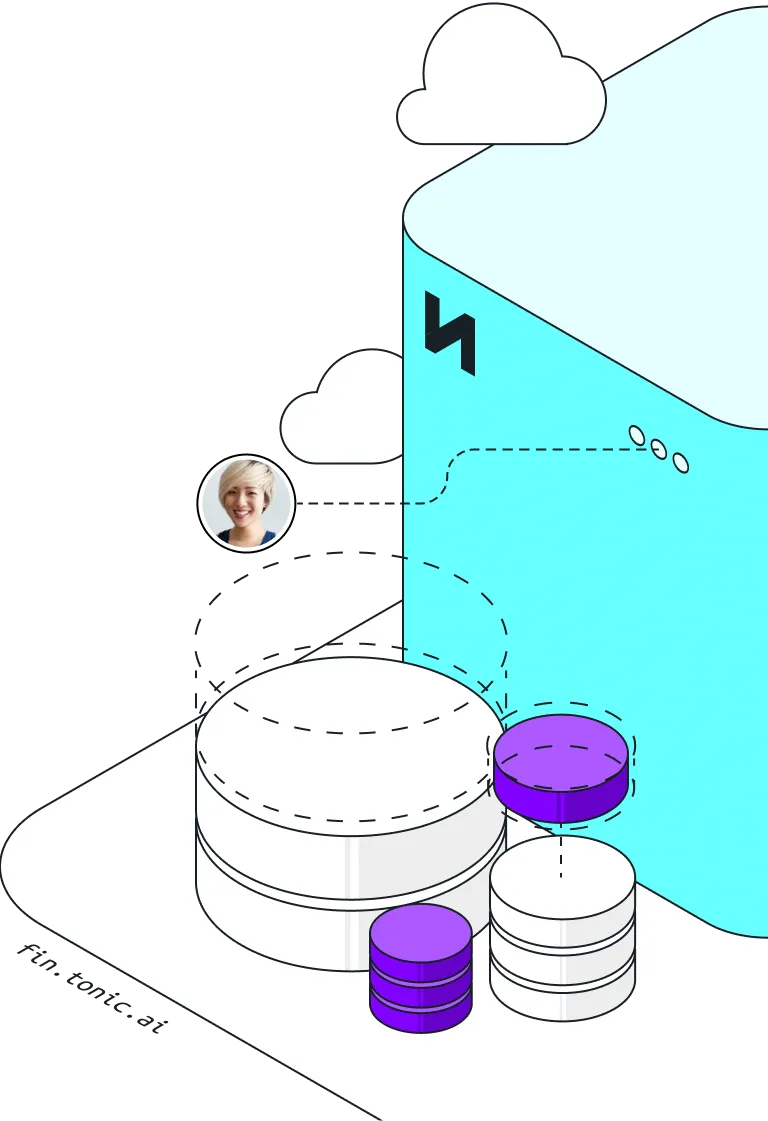A growing number of organizations are already seeing the consequences of insecure AI. According to IBM, 13% of organizations have reported breaches involving AI models or applications. Gartner forecasts that by 2027, 40% of AI data breaches will result from cross-border misuse of generative AI.
If you’re working on AI systems, this is both a policy concern and an architecture issue. When sensitive data is used to train or prompt models without proper controls, you’re setting yourself up for a bad situation.
In this article, you’ll get a clear breakdown of the most common threats, practical ways to reduce your exposure and risk for AI data breaches, and how Tonic.ai can help you protect what matters most.
AI's role in data breaches
AI systems can become vectors for data breaches in two key ways: they can leak sensitive information due to poor internal controls, or they can be manipulated by attackers using AI-enabled techniques. Here's how AI becomes both a target and a tool in modern breach strategies.
Model memorization
Large language models (LLMs) trained on sensitive user data can memorize and later regurgitate it. For example, a model trained on unredacted support tickets might expose customer names, health conditions, or account credentials. Preventing this starts with upstream data hygiene, including the use of synthetic or de-identified datasets.
Data exfiltration
AI models exposed through unsecured APIs are prime targets for extraction. Attackers may craft prompts or overwhelm endpoints to siphon off valuable information. To help prevent AI data breaches, you’ll need:
- Prompt filtering and validation
- Strict rate limiting
- Output monitoring to catch anomalies
Phishing attacks and social engineering
AI tools like text generators and voice cloning have raised the bar for phishing. What used to be obvious email scams are now hyper-targeted, grammatically flawless, and tailored to specific victims. Worse, threat actors are using prompt engineering to manipulate generative models into crafting convincing pretexts or even malware code.
Network intrusions
If your AI systems rely on a web of cloud tools and APIs, your attack surface for AI data breaches is bigger than you think. Weak points like misconfigured ports or unsegmented environments make it easier for attackers to move laterally across your infrastructure and escalate privileges unnoticed.
Advanced persistent threats (APTs)
APTs are long-term attacks by sophisticated actors who infiltrate systems and maintain stealthy access for months. AI systems are attractive targets because of the sensitive data they may handle. An APT might begin with a phishing email, gain access to your training environment, and slowly siphon out proprietary datasets or embed logic for future data exfiltration.
Unblock your AI initiatives and build features faster by securely leveraging your free-text data.
How to reduce your risk for AI data breaches
Reducing your risk starts with proactive design. Below are key actions you can take across the AI pipeline:
- Strengthen AI governance, risk and compliance (GRC)
Develop a clear framework to classify AI systems by risk level. Implement policies that define data access boundaries, require security reviews for all AI-related code, and enforce consistent versioning and audit trails. Assign ownership so that AI systems aren't deployed without cross-functional visibility. - De-identify or synthesize data used for model training
Training on real user data is risky, especially with large, opaque models. Instead, use synthetic data or de-identified data that replicate the statistical qualities of your datasets without retaining real user information. Tonic.ai enables teams to generate high-quality synthetic datasets that preserve utility while removing exposure. - Redact data prior to LLM ingestion
Before fine-tuning or prompt injection, scan and clean your data for personally identifiable information. Even simple pattern-based scrubbing (e.g., emails, phone numbers) can eliminate the risk of future leakage. More robust pipelines use techniques like Named Entity Recognition for context-aware redaction or substitution. - Review and reinforce cloud security
Audit your AI infrastructure. Are your S3 buckets encrypted? Are training jobs isolated? Use least-privilege IAM roles, monitor service access logs, and protect endpoints from overexposure. Many breaches begin with a single overlooked misconfiguration. - Provide continuous education and training
Equip your team with ongoing updates about new AI threat vectors—like model inversion attacks or data poisoning. Make security part of your sprint planning: treat every model update like a deployable service with its own threat model.
Tonic.ai's solutions for AI data breaches
Tonic.ai helps you eliminate sensitive data exposure at the source. Instead of relying on real user information during development, the Tonic platform generates synthetic datasets that mimic your production data—without carrying the risk. That means you can:
- Fine-tune models and build pipelines using data that’s safe by design
- Redact, mask, or synthesize sensitive data before ingestion
- Improve auditability and traceability without slowing development
Whether you’re working with unstructured data, like free-text files, images, and audio, or structured databases, the Tonic product suite keeps PII out of your models from day one. Combined with robust logging and documentation, Tonic.ai supports a defensible and scalable AI workflow.
Ready to try it yourself? Book a demo to get set up with an account and secure your AI pipeline.
The biggest vulnerabilities in AI systems include model memorization of sensitive data, inadequate access controls, unsecured APIs, and insufficient logging. Poor data handling at ingestion is often the root cause.
Synthetic data mimics the structural and statistical properties of real data without exposing actual user information. It prevents personal data from being embedded in AI models and leaking later.
Yes. If models are trained on unredacted personal data, they can reproduce that data in outputs, especially under prompt manipulation or API probing.
Developers play a key role in preventing AI data breaches by implementing data minimization, choosing secure training datasets, setting access controls, and building in auditability from day one.
Yes. With the growing adoption of AI, the number and sophistication of AI-related data breaches is rising, especially with the misuse of generative AI across global deployments.
.svg)
.svg)





























